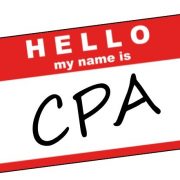Take Note of the Distinctive Features of Roth IRAs
Traditional vs. Roth
The biggest difference between traditional and Roth IRAs is how taxes affect contributions and distributions. Contributions to traditional IRAs generally are made with pretax dollars, reducing your current taxable income and lowering your current tax bill. You pay taxes on the funds when you make withdrawals. As a result, if your current tax bracket is higher than what you expect it will be after you retire, a traditional IRA can be advantageous.
In contrast, contributions to Roth IRAs are made with after-tax funds. You pay taxes on the funds now, and your withdrawals won’t be taxed (provided you meet certain requirements). This can be advantageous if you expect to be in a higher tax bracket in retirement or if tax rates increase.
Roth distributions differ from traditional IRA distributions in yet another way. Withdrawals aren’t counted when calculating the taxable portion of your Social Security benefits.
Additional Advantages
A Roth IRA may offer a greater opportunity to build up tax-advantaged funds. Your contributions can continue after you reach age 70½ as long as you’re earning income, and the entire balance can remain in the account until your death. In contrast, beginning with the year you reach age 70½, you can’t contribute to a traditional IRA — even if you do have earned income. Further, you must start taking required minimum distributions (RMDs) from a traditional IRA no later than April 1 of the year following the year you reach age 70½.
Avoiding RMDs can be a valuable benefit if you don’t need your IRA funds to live on during retirement. Your Roth IRA can continue to grow tax-free over your lifetime. When your heirs inherit the account, they’ll be required to take distributions — but spread out over their own lifetimes, allowing a continued opportunity for tax-free growth on assets remaining in the account. Further, the distributions they receive from the Roth IRA won’t be subject to income tax.
Many Vehicles
As you begin planning for retirement (or reviewing your current plans), it’s important to consider all retirement planning vehicles. A Roth IRA may or may not be one of them. Please contact us for individualized help in determining whether it’s a beneficial choice.
Sidebar: TCJA Eliminated Option to Recharacterize Roths
The passage of the Tax Cuts and Jobs Act late last year had a marked impact on Roth IRAs: to wit, taxpayers who wish to convert a pretax traditional IRA into a posttax Roth IRA can no longer “recharacterize” (that is, reverse) the conversion for 2018 and later years.
The IRS recently clarified in FAQs on its website that, if you converted a traditional IRA into a Roth account in 2017, you can still reverse the conversion as long as it’s done by October 15, 2018. (This deadline applies regardless of whether you extend the deadline for filing your 2017 federal income tax return to October 15.)
Also, recharacterization is still an option for other types of contributions. For example, you can still make a contribution to a Roth IRA and subsequently recharacterize it as a contribution to a traditional IRA (before the applicable deadline).






